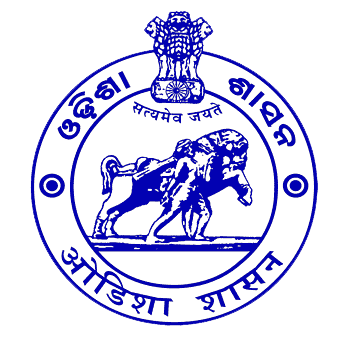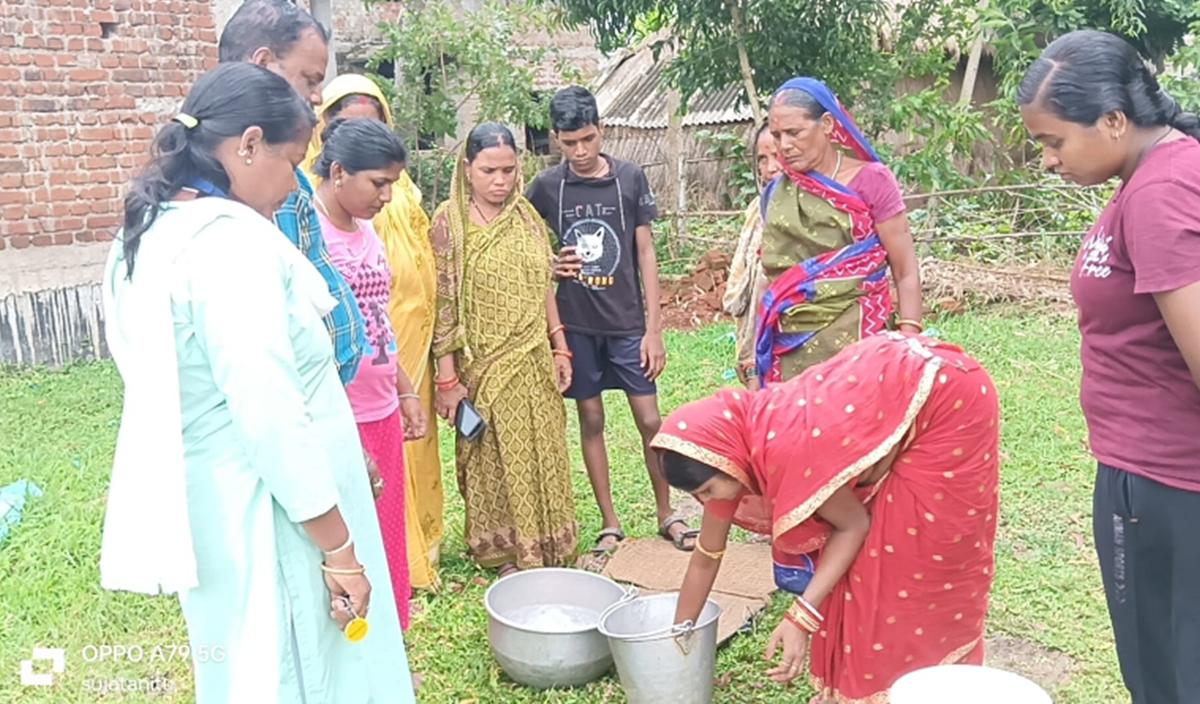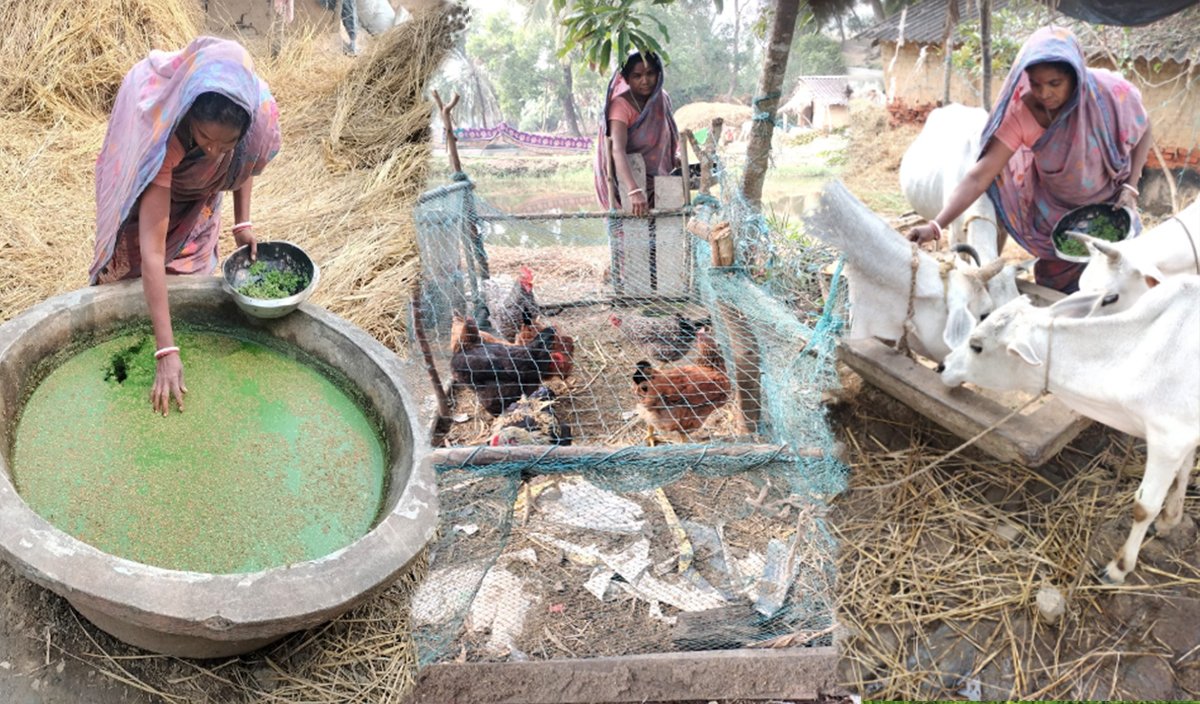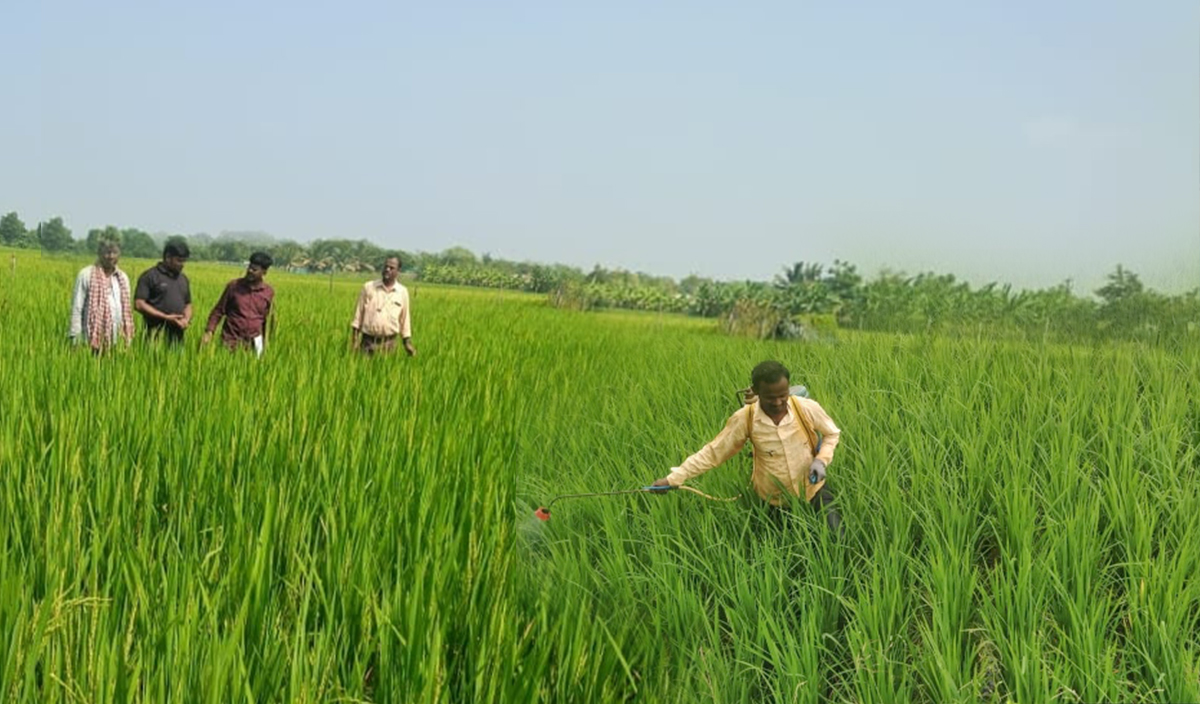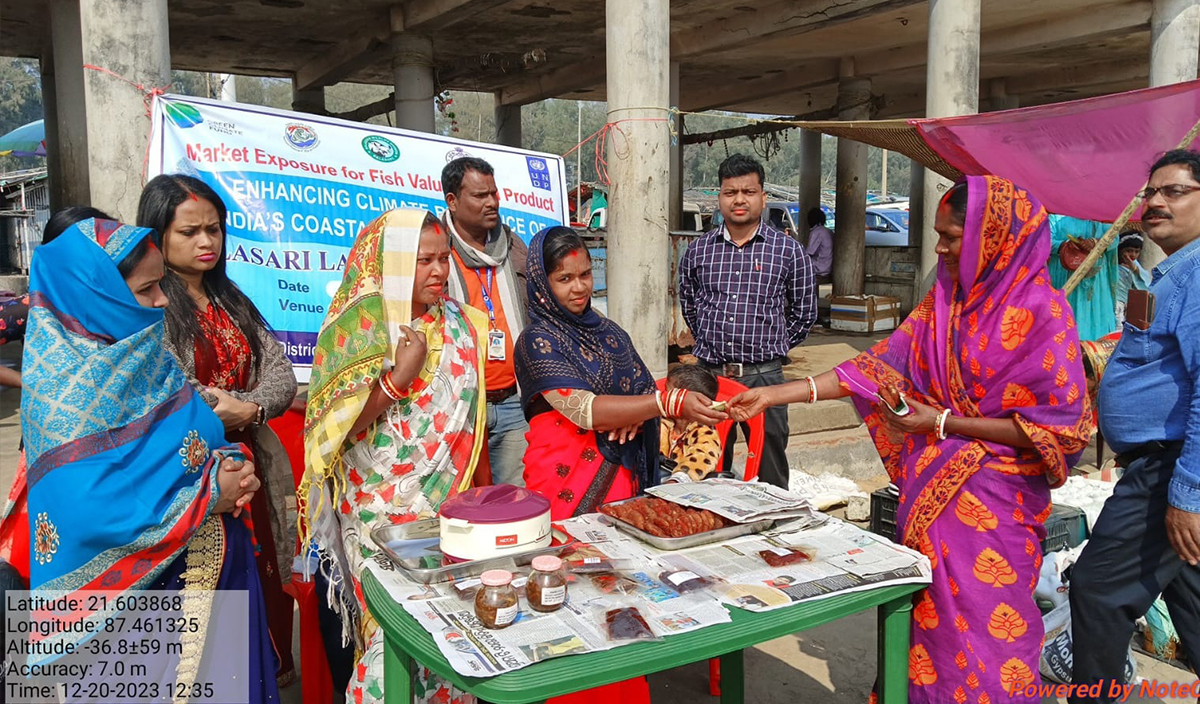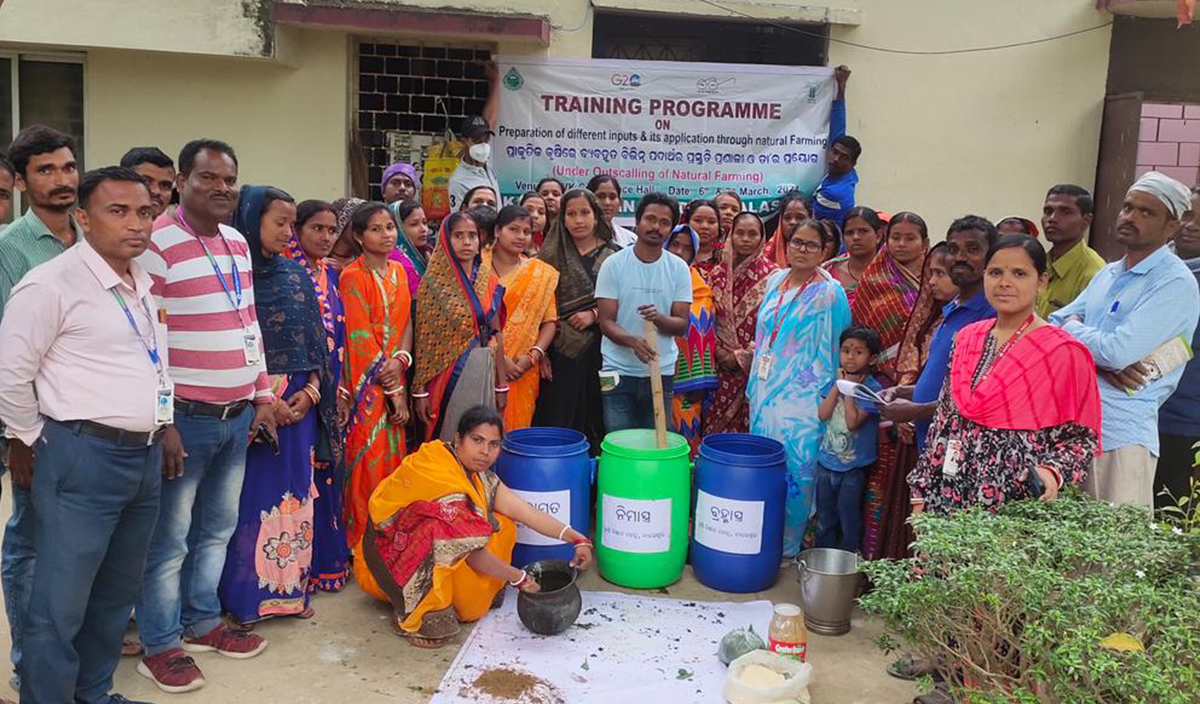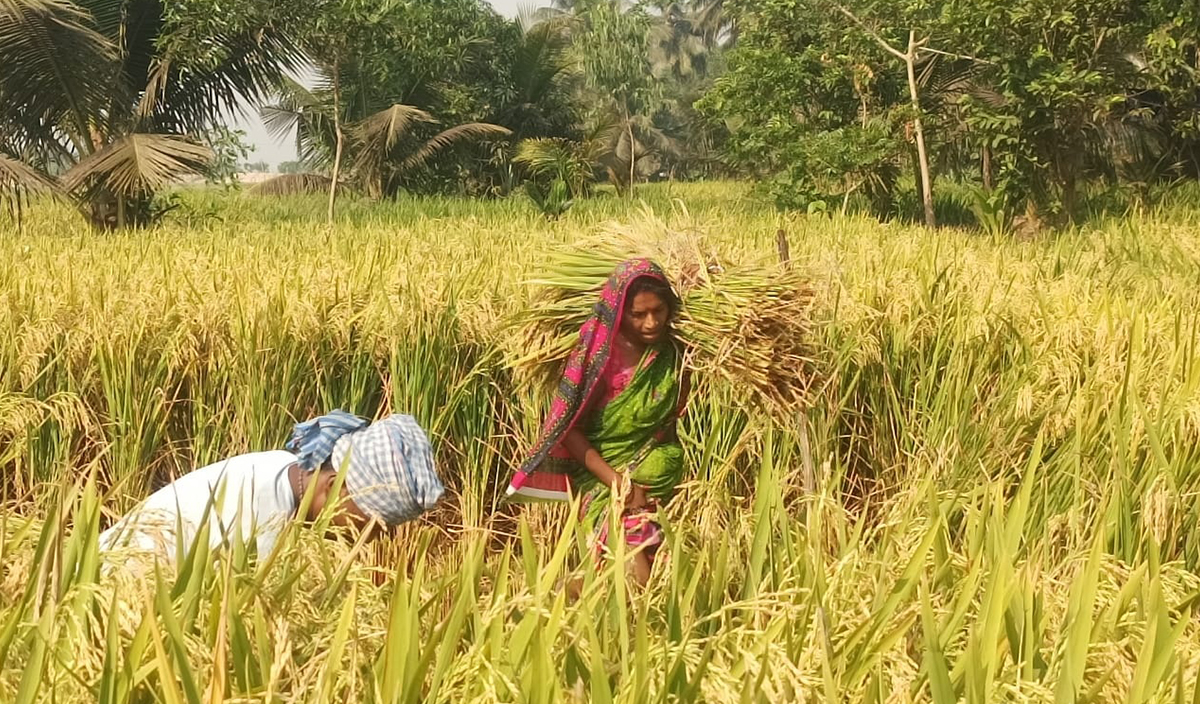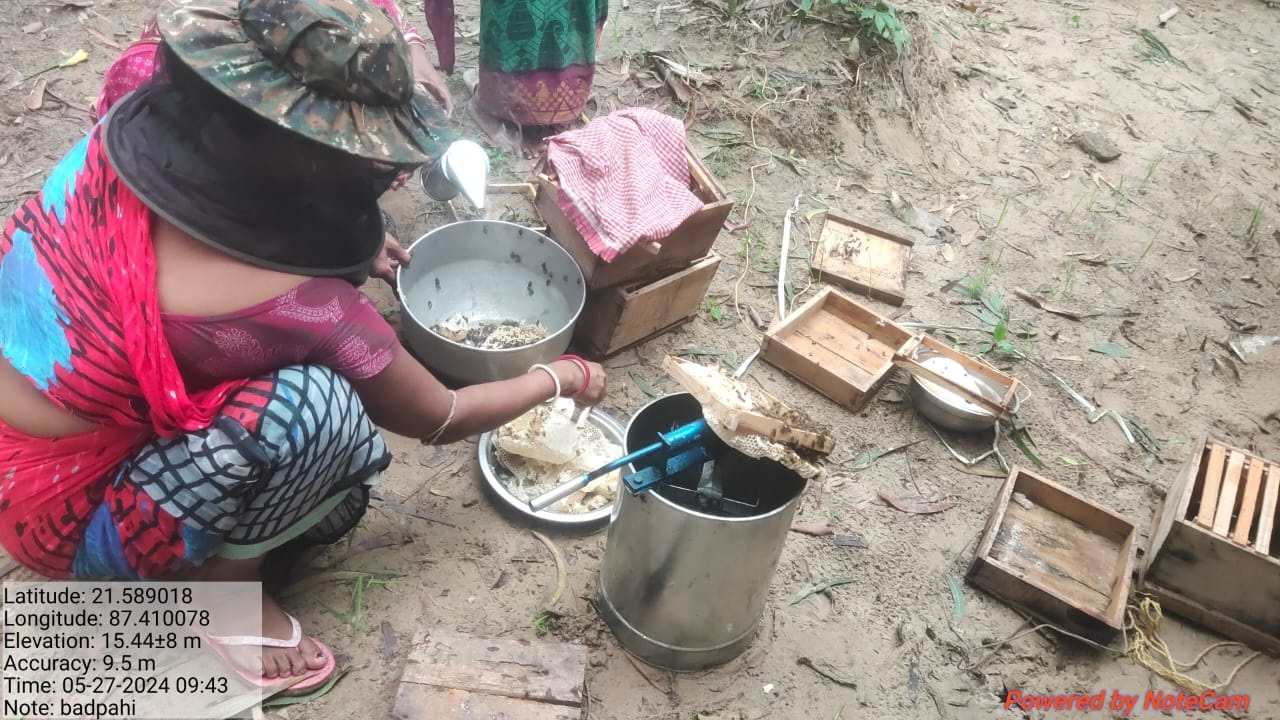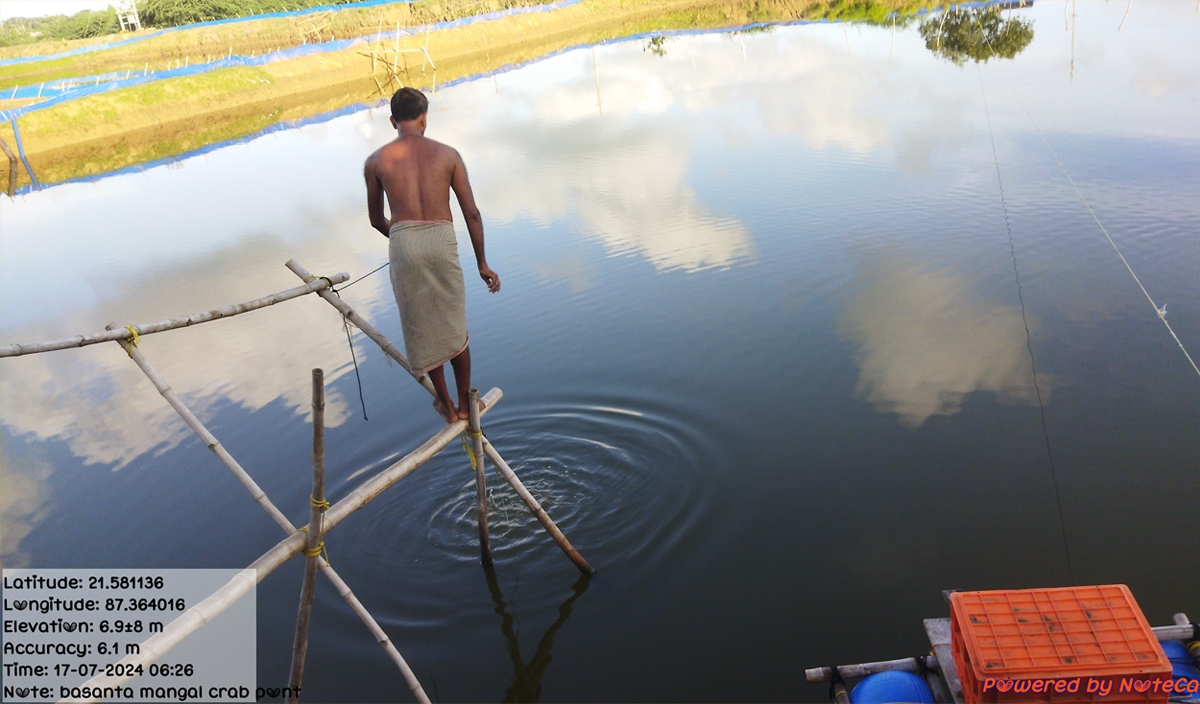SRI: A Revolution in Agricultural Technology for Paddy Farmers in Dhandia
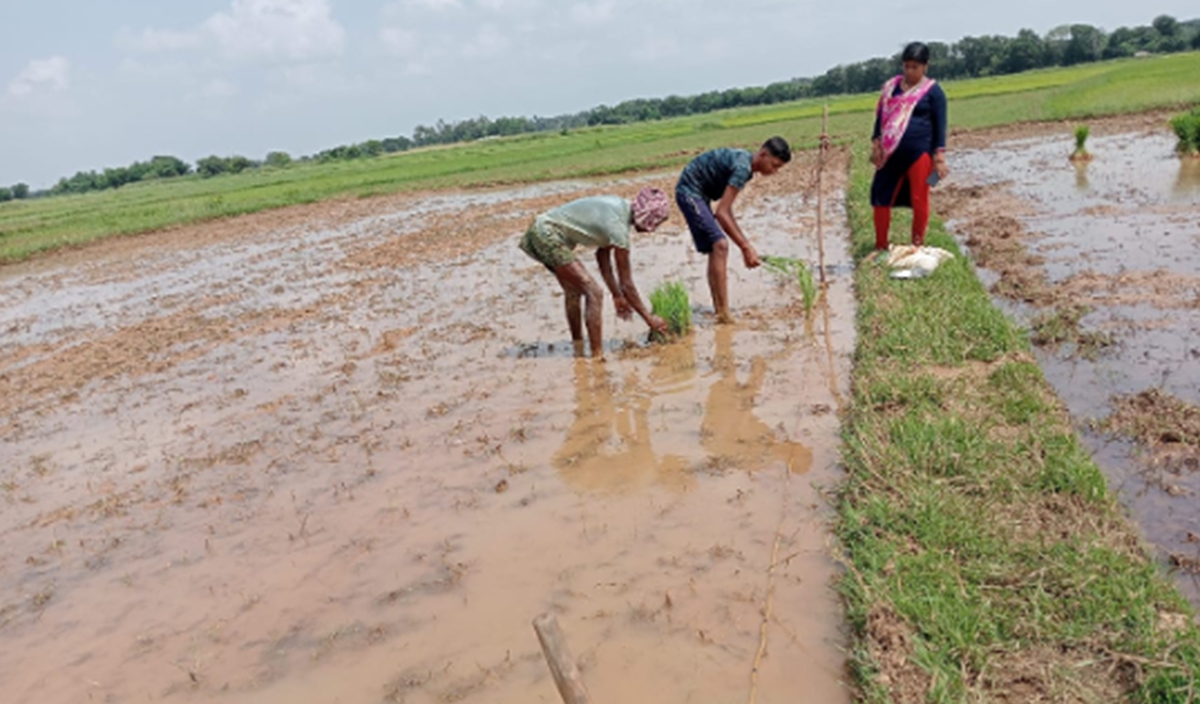
Farmers in the Bhitarkanika area of Kendrapara district in Odisha faced the adverse impacts of climate change at the coastal Dhandia village. The increasing drought conditions resulted in rainfall dependent farming, salt water canals, and irrigation became unavailable for paddy fields. The soil which used to be arable could no longer produce crops, while the weather patterns kept changing negatively. With such dire situations, the ECRICC project, backed by the Department of Forest, Environment and Climate Change along with Nature’s Club, chose this context to implement the System of Rice Intensification (SRI) which is a more holistic approach towards agriculture.
The Start of Transformation
In Dhandia, paddy farmers like Swapneswar Pradhan have been using age-old techniques even when it’s clear these techniques were no longer effective. The salinity of irrigation water and unfavourable rainfall set farming on a never-ending battle. The cost associated with fertilizers drastically increased and a lot of the farmers found themselves in a cycle of poor yields and deep debts. With the introduction of SRI through the ECRICC project, there was an optimism for change. Although very sceptical, like most, Swapneswar ended up trying this revolutionary method.
SRI’s Approach to Agricultural Innovation
Attending training and other community programs organized by the project, Swapneswar and other farmers learned how to apply SRI, in particular seed treatment, transplanting, and manure making. The additional training showed SRI also included wider spacing of planting rice seedlings as well as shifting to organic manure instead of potash chemical fertilizers which took a toll on families from higher income households and improved the soil.
Swapneswar started to use these new methods for his own farm after receiving continuous support and instruction. While the method demands more attention and care, he was slowly starting to notice the promising outcomes – healthier plants, improved soil, and much more caring of resources.
The Results
-
Increased Yield:
As a result from reporting improved rice panicle count, Swapneswar saw a noticeable increase in his overall yield. Due to the adoption of SRI methods, his rice crops surpass all of his previous harvests in quantitative and qualitative growth. -
Cost Reduction:
The use of pot manure and Jeevamrut, alongside other organic inputs, helped him lower his production costs significantly. By eliminating the use of fertilizers and pesticides, Swapneswar was able to enjoy higher profits while fully committing to green farming practices. -
Environmental Benefits:
By replacing chemical fertilizers with organic manure, Swapneswar was able to cut down on his dependency to harmful chemicals, which led to a healthier environment surrounding his farm and beyond. The use of SRI helped recover soil health and combat long term soil suffering. -
Improved Livelihoods:
While Swapneswar used to farm as a labourer, he now earns enough from farming to consider investing in new businesses. His successful harvesting greatly improved his family’s financial situation, and with money left over, he was able to focus on spending money towards the family’s long-term health and prosperity.
Swapneswar’s Journey
The journey of Swapneswar Pradhan is a powerful testimony to how sustainably practicing agriculture can change lives. At the beginning of his career, he was very resistant to changing from conventional farming, but after using SRI, he was a staunch advocate of it because of how beneficial it was. With SRI, her was able to meet his family’s financial needs and gained better yields.
As he has done in the past, Swapneswar declares, “I will use pot manure and Jeevamrut. My crop cultivation practice will remain the same.” With the drugs and practices that increased his yield, he vows to continue using them.
Overcoming Challenges
Adjusting to SRI was not easy. Most farmers from Dhandia remained change-averse, and were skeptical towards new practices. The changing climate added to the challenges, as doing something so different from what they were used to was hard to trust. Nevertheless, these challenges were solved through constant communication thanks to the ECRICC project. Farmers bottom-up meetings, participatory action research, and storytelling helped farmers with less trust. The use of SRI expanded as the motivation from Swapneswar helped other farmers in SRI adoption.
A Model for Sustainable Agriculture
The brilliance of Swapneswar farmers exemplifies the effectiveness of SRI as a climate change management strategy for paddy farmers. Farmers in Dhandia who previously struggled with high cultivation costs and low yields have found SRI as a new hope as it enables easier and more effective farming. Farmers like Swapneswar are spearheading the changes that will bring increased food security, enhanced environmental sustainability, and improved economic productivity for their communities.
Swapneswar’s story illustrates how positive farming practices transforms any farm. With the aid of the ECRICC project, Swapneswar has not only improved his farm but also become a source of hope for many with his inspirational lifestyle.

